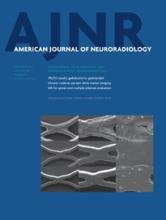Abstract
BACKGROUND AND PURPOSE: Large admission DWI infarct volume (>70 mL) is an established marker for poor clinical outcome in acute stroke. Outcome is more variable in patients with small infarcts (<70 mL). Percentage insula ribbon infarct correlates with infarct growth. We hypothesized that percentage insula ribbon infarct can help identify patients with stroke likely to have poor clinical outcome, despite small admission DWI lesion volumes.
MATERIALS AND METHODS: We analyzed the admission NCCT, CTP, and DWI scans of 55 patients with proximal anterior circulation occlusions on CTA. Percentage insula ribbon infarct (>50%, ≤50%) on DWI, NCCT, CT-CBF, and CT-MTT were recorded. DWI infarct volume, percentage DWI motor strip infarct, NCCT-ASPECTS, and CTA collateral score were also recorded. Statistical analyses were performed to determine accuracy in predicting poor outcome (mRS >2 at 90 days).
RESULTS: Admission DWI of >70 mL and DWI–percentage insula ribbon infarct of >50% were among significant univariate imaging markers of poor outcome (P < .001). In the multivariate analysis, DWI–percentage insula ribbon infarct of >50% (P = .045) and NIHSS score (P < .001) were the only independent predictors of poor outcome. In the subgroup with admission DWI infarct of <70 mL (n = 40), 90-day mRS was significantly worse in those with DWI–percentage insula ribbon infarct of >50% (n = 9, median mRS = 5, interquartile range = 2–5) compared with those with DWI–percentage insula ribbon infarct of ≤50% (n = 31, median mRS = 2, interquartile range = 0.25–4, P = .036). In patients with admission DWI infarct of >70 mL, DWI–percentage insula ribbon infarct did not have added predictive value for poor outcome (P = .931).
CONCLUSIONS: DWI–percentage insula ribbon infarct of >50% independently predicts poor clinical outcome and can help identify patients with stroke likely to have poor outcome despite small admission DWI lesion volumes.
ABBREVIATIONS:
- IQR
- interquartile range
- PIRI
- percentage insula ribbon infarct
- © 2015 by American Journal of Neuroradiology
Indicates open access to non-subscribers at www.ajnr.org












